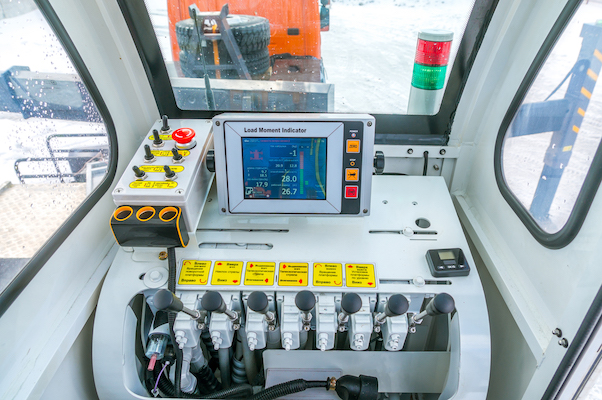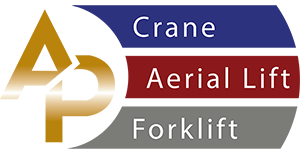Services
Aerial Lift TrainingForklift Operator Certification
Instructor Courses
Mobile Crane Operator Certification
Online Training
Crane Operator Training
Overhead Crane Training
Rigging and SignalPerson Training
All Purpose Crane Training offers crane operator training on-site or off-site. Providing National accredited crane operator certification meeting OSHA ANSI standards for crane operators to become certified.
1926.1401
1926.1402
1926.1403
1926.1404
1926.1405
1926.1406
1926.1407
1926.1408
1926.1409
1926.1410
1926.1411
1926.1412
1926.1413
1926.1414
1926.1415
1926.1416
1926.1417
1926.1418
1926.1419
1926.1420
1926.1421
1926.1422
1926.1423
1926.1424
1926.1425
1926.1426
1926.1427
1926.1428
1926.1429
1926.1430
1926.1431
1926.1432
1926.1433
1926.1434
1926.1435
1926.1436
1926.1437
1926.1438
1926.1439
1926.1440
1926.1441
1926.1442

- (a) The employer must comply with all manufacturer procedures applicable to the operational functions of equipment, including its use with attachments.
- (b) Unavailable operation procedures.
- (1) Where the manufacturer procedures are unavailable, the employer must develop and ensure compliance with all procedures necessary for the safe operation of the equipment and attachments.
- (2) Procedures for the operational controls must be developed by a qualified person.
- (3) Procedures related to the capacity of the equipment must be developed and signed by a registered professional engineer familiar with the equipment.
- (c) Accessibility of procedures.
- (1) The procedures applicable to the operation of the equipment, including rated capacities (load charts), recommended operating speeds, special hazard warnings, instructions, and operators manual, must be readily available in the cab at all times for use by the operator.
- (2) Where rated capacities are available in the cab only in electronic form: in the event of a failure which makes the rated capacities inaccessible, the operator must immediately cease operations or follow safe shut-down procedures until the rated capacities (in electronic or other form) are available.
- (d) The operator must not engage in any practice or activity that diverts his/her attention while actually engaged in operating the equipment, such as the use of cellular phones (other than when used for signal communications).
- (e) Leaving the equipment unattended.
- (1) The operator must not leave the controls while the load is suspended, except where all of the following are met:
- (i) The operator remains adjacent to the equipment and is not engaged in any other duties.
- (ii) The load is to be held suspended for a period of time exceeding normal lifting operations.
- (iii) The competent person determines that it is safe to do so and implements measures necessary to restrain the boom hoist and telescoping, load, swing, and outrigger or stabilizer functions.
- (iv) Barricades or caution lines, and notices, are erected to prevent all employees from entering the fall zone. No employees, including those listed in 1926.1425(b)(1) through (3), 1926.1425(d) or 1926.1425(e), are permitted in the fall zone.
- (2) The provisions in 1926.1417(e)(1) do not apply to working gear (such as slings, spreader bars, ladders, and welding machines) where the weight of the working gear is negligible relative to he lifting capacity of the equipment as positioned and the working gear is suspended over an area other than an entrance or exit.
- (f) Tag-out.
- (1) Tagging out of service equipment/functions. Where the employer has taken the equipment out of service, a tag must be placed in the cab stating that the equipment is out of service, a tag must be placed in the cab stating that the equipment is out of service and is not to be used. Where the employer has taken a function(s) out of service, a tag must be placed in a conspicuous position stating that the function is out of service and is not to be used.
- (2) Response to "do not operate" / tag out signs.
- (i) If there is a warning (tag-out or maintenance/do not operate) sign on the equipment or starting control, the operator must not activate the switch or start the equipment until the sign has been removed by a person authorized to remove it, or until the operator has verified that:
- (A) No one is servicing, working on, or otherwise in a dangerous position on the machine.
- (B) The equipment has been repaired and is working properly.
- (ii) if there is a warning (tag-out or maintenance/do not operate) sign on any other switch or control, the operator must not activate that switch or control until the sign has been removed by a person authorized to remove it, or until the operator has verified that the requirements in paragraphs (f)(2)(i)(A) and (B) of this section have been met.
- (g) Before starting the engine, the operator must verify that all controls are in the proper starting position and that all personnel are in the clear.
- (h) Storm warning. When a local storm warning has been issued, the competent person must determine whether it is necessary to implement manufacturer recommendations for securing the equipment.
- (i) [Reserved.]
- (j) If equipment adjustments or repairs are necessary:
- (1) The operator must, in writing, promptly inform the person designated by the employer to receive such information and, where there are successive shifts, to the next operator: and
- (2) The employer must notify all affected employees, at the beginning of each shift, of the necessary adjustments or repairs and all alternative measures.
- (k) Safety devices and operational aids must not be used as a substitute for the exercise of professional judgment by the operator.
- (l) [Reserved.]
- (m) If the competent person determines that there is a slack rope condition requiring respooling of the rope, it must be verified (before starting to lift) that the rope is seated on the drum and in the sheaves as the slack is removed.
- (n) The competent person must adjust the equipment and/or operations to address the effect of wind, ice, and snow on equipment stability and rated capacity.
- (o) Compliance with rated capacity.
- (1) The equipment must not be operated in excess of its rated capacity.
- (2) The operator must not be required to operate the equipment in a manner that would violate paragraph (o)(1) of this section.
- (3) Load Weight. The operator must verify that the load is within the rated capacity of the equipment by at least one of the following methods:
- (i) The weight of the load must be determined from a source recognized by the industry (such as the load's manufacturer), or by a calculation method recognized by the industry (such as calculating a steel beam from measured dimensions and a known per foot weight), or by other equally reliable means. In addition, when requested by the operator, this information must be provided to the operator prior to the lift; or
- (ii) The operator must begin hoisting the load to determine, using a load weighing device, load moment indicator, rated capacity indicator, or rated capacity limiter, if it exceeds 75 percent of the maximum rated capacity at the longest radius that will be used during the lift operation. If it does, the operator must not proceed with the lift until he/she verifies the weight of the load in accordance with paragraph (o)(3)(i) of this section.
- (p) The boom or other parts of the equipment must not contact any obstruction.
- (q) The equipment must not be used to drag or pull loads sideways.
- (r) On wheel-mounted equipment, no loads must be lifted over the front area, except as permitted by the manufacturer.
- (s) The operator must test the brakes each time a load that is 90% or more of the maximum line pull is handled by lifting the load a few inches and applying the brakes. In duty cycle and repetitive lifts where each lift is 90% or more of the maximum line pull, this requirement applies to the first lift but not to successive lifts.
- (t) Neither the load nor the boom must be lowered below the point where less than two full wraps of rope remain on their respective drums.
- (u) Traveling with a load.
- (1) Traveling with a load is prohibited if the practice is prohibited by the manufacturer.
- (2) Where traveling with a load, the employer must ensure that:
- (i) A competent person supervises the operation, determines if it is necessary to reduce rated capacity, and makes determinations regarding load position, boom location, ground support, travel route, overhead obstructions, and speed of movement necessary to ensure safety.
- (ii) The determinations of the competent person required in paragraph (u)(2)(i) of this section are implemented.
- (iii) For equipment with tires, tire pressure specified by the manufacturer is maintained.
- (v) Rotational speed of the equipment must be such that the load does not swing out beyond the radius at which it can be controlled.
- (w) A tag or restraint line must be used if necessary to prevent rotation of the load that would be hazardous.
- (x) The brakes must be adjusted in accordance with manufacturer procedures to prevent unintended movement.
- (y) The operator must obey a stop (or emergency stop) signal, irrespective of who gives it.
- (z) Swinging locomotive cranes. A locomotive crane must not be swung into a position where railway cars on an adjacent track could strike it, until it is determined that cars are not being moved on the adjacent track and that proper flag protection has been established.
- (aa) Counterweight/ballast.
- (1) The following applies to equipment other than tower cranes:
- (i) Equipment must not be operated without the counterweight or ballast in place as specified by the manufacturer.
- (ii) The maximum counterweight or ballast specified by the manufacturer for the equipment must not be exceeded.
- (2) Counterweight/ballast requirements for tower cranes are specified in 1926.1435(b)(8).
